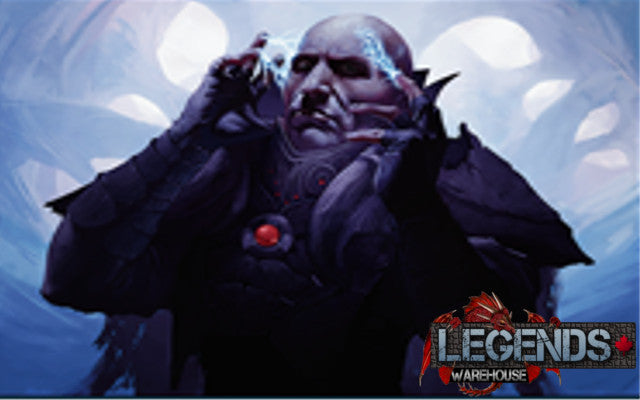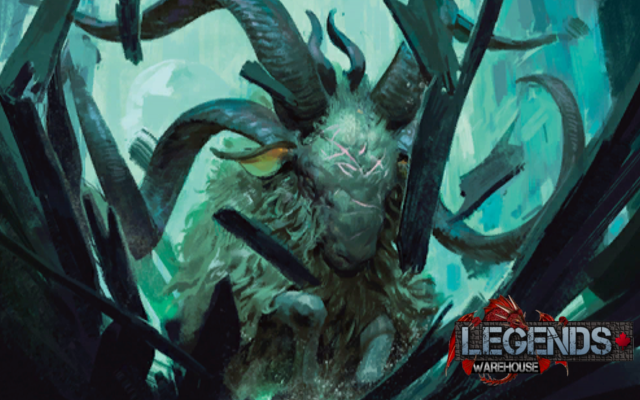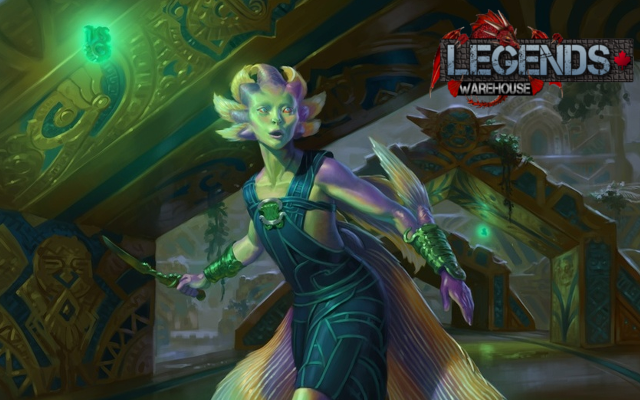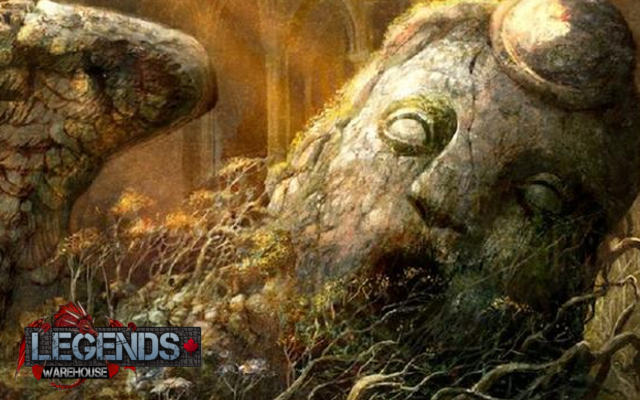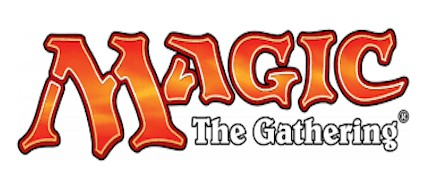Minding Your Magus
- Legends Warehouse News
- 19 Nov, 2017
Mind’s Desire is a fun card. This is the motto of every degenerate Commander, Vintage, and “I’m old and remember Scourge” player out there. It’s the epitome of Magic insanity, routinely casting your entire deck in one turn. Unfortunately (or fortunately, depending on your viewpoint), Mind’s Desire has been banned in Legacy since 2003, forcing Storm decks to set their sights a little lower. However, in Commander 2017 we received the creature incarnation of our favourite spell in Magus of the Mind. Each comes with their own pluses, with Mind’s Desire having firing off right away, whereas Magus has to wait a turn to activate the ability, while Magus has the advantage of actually being legal. Magus of the Mind requires a bit more work in Legacy, but what happens when you really try to abuse it? You get a work of art.
- 4 Magus of the Mind
- 1 Emrakul, the Aeons Torn
- 1 Tendrils of Agony
- 4 Entomb
- 4 Shallow Grave
- 4 Corpse Dance
- 4 Cabal Therapy
- 4 Gitaxian Probe
- 4 Ponder
- 4 Lotus Petal
- 4 Brainstorm
- 4 Lion’s Eye Diamond
- 4 Dark Ritual
- 2 Watery Grave
- 4 Polluted Delta
- 4 Bloodstained Mire
- 2 Island
- 2 Swamp
- 3 Massacre
- 3 Chain of Vapor
- 2 Flusterstorm
- 3 Duress
- 3 Pithing Needle
- 1 Slaughter Pact
The goal of this deck is to use Magus of the Mind to build up a massive storm count culminating with a hardcast Emrakul, the Aeons Torn or Tendrils of Agony. When you activate Magus of the Mind, you get to exile your top X cards, where X is your storm count plus one, and you can cast them for free until the end of turn. This way we get to chain spells over and over until we hit our win conditions.
The biggest issue with Magus of the Mind, however, is that you have to tap it to activate it. Thankfully, there are a couple ways to get around this. Both Shallow Grave and Corpse Dance put the top creature in our graveyard onto the battlefield with haste with the caveat that you have to exile it at the beginning of the next end step. With these cards, we can bring back Magus and activate it right away. As well, because sacrificing Magus is part of the cost, it goes back to our graveyard, so if we exile any reanimation spells with the ability we can bring Magus back to the battlefield all over again.
The deck also runs full sets of Legacy cheapest and most powerful cantrips, Brainstorm, Ponder, and Gitaxian Probe to set up our combo turn. This way we can dig into any missing pieces, or even shuffle away a win condition if we’re about to draw it. Gitaxian Probe is one of the most important pieces because it lets us know our opponent’s hand, as well as cantripping for free. It also works tremendously with Cabal Therapy by eliminating the guesswork out of naming a card to discard.
In order to accelerate our combo, I’ve elected to run full sets of Dark Ritual, Lotus Petal, and Lion’s Eye Diamond. I’ve tried running Chrome Mox over the Diamonds, but Lion’s Eye Diamond performs a unique function that can’t really be duplicated. Because Shallow Grave and Corpse Dance check for the top card of our graveyard, they don’t actually target a card. This means we can cast a Shallow Grave, hold priority to crack Lion’s Eye Diamond for three Blue mana, and discard a Magus of the Mind for Shallow Grave to bring back. This way we’re dumping a creature into our graveyard and getting the mana to activate it. As well, should opposing graveyard hate like Deathrite Shaman attempt to exile our Magus in response to Shallow Grave, we can crack Lion’s Eye Diamond to put a second copy into the graveyard with Shallow Grave still on the stack.
One thing I have to address about this list is that while Underground Seas are ideal for the manabase, I’ve found that it hasn’t been too much of an issue running Watery Grave. The main reason is that we aren’t expecting the game to go on longer than a few turns, so paying two life is hardly detrimental over the course of the game. Granted, if you already have Seas, by all means run them, but if you don't have $900 kicking around for cardboard it’s hardly the end of the world is you have to substitute shocklands.
For the sideboard, we need to deal with some of the most brutal anti-storm cards in Legacy. Massacre does a fantastic job of sweeping away the various hate bears in Death & Taxes, such as Thalia, Guardian of Thraben and Ethersworn Canonist. Slaughter Pact is also great against Canonist, but you have to be aware of paying for the Pact trigger should the game go to another turn. Flusterstorm is in the sideboard to handle opposing countermagic, namely Flusterstorm. Because Flusterstorm targets with multiple copies, single target counterspells won’t help you resolve your spells. That’s why you have to answer their Flusterstorm with your own by putting each copy of your counterspell on the stack targeting each copy of their Flusterstorm.
Pithing Needle is a necessary evil as it shuts off Deathrite Shaman, Tormod’s Crypt, and even the occasional Faerie Macabre from disrupting your graveyard. Chain of Vapor, on the other hand, can bounce these cards back to their hand on the opponent’s end step before we attempt to combo off, and also gives us an out to Leyline of the Void, which would otherwise be a hard lock against our deck. Finally, Duress is a fantastic option for dealing with opposing Blue decks. This way you can look for Force of Will before doing anything big, and if they choose to use their counterspell on the Duress, that just adds to our storm count. These slots can easily be Thoughtseize if you have access to them as they do the same thing but can also discard creatures.
Magus of the Mind is the spiritual successor to Mind’s Desire, and in this deck it’s every bit as broken as its original counterpart. Recurring Magus over and over in a turn and casting your entire deck for free is one of the best feelings in the world, and just being able to say “cast Tendrils of Agony, storm count is fifty” is a very real and common way to end games. This deck is the equivalent of taking a traditional storm deck, dousing it in gasoline, and throwing the flaming cardboard at your opponent in a flurry not seen outside of an X-Men comic. If you’re in the mood for some serious fun, give Magus of the Mind a spin!


